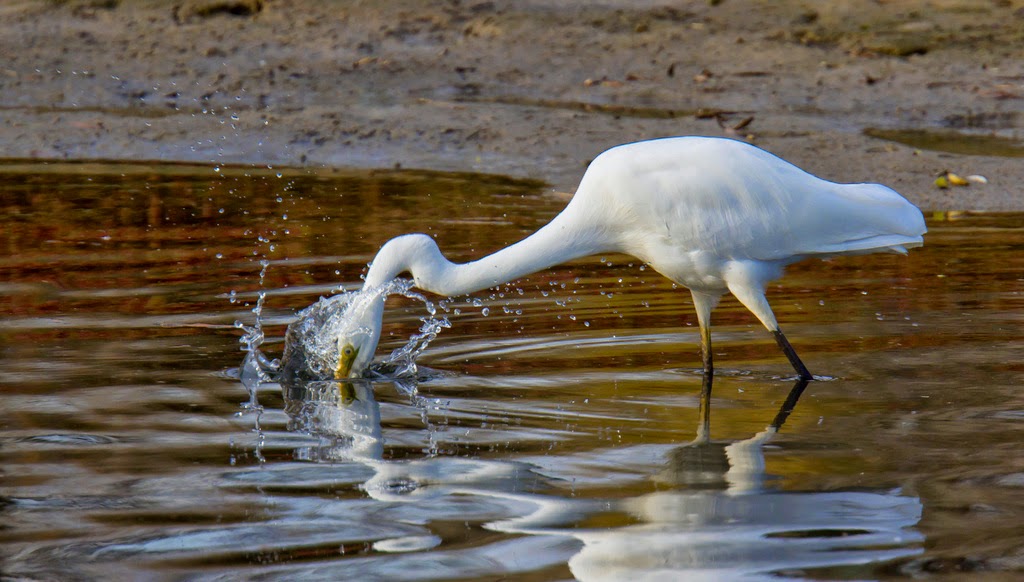As I neared the eastern end of the canal, I noticed a movement out of the corner of my eye, which before losing sight of it, I identified as a Grey Butcherbird apparently feeding on a 'corpse'. I reversed to have a closer look and thought this might have some photographic possibilities, although it was heavily overcast. The Butcherbird seemed quite comfortable with my presence, provided I stayed in the vehicle. The 'corpse' proved to be a female Blackbird, probably a recent road casualty, and I looked forward to getting a few shots of the Butcherbird feeding.
That didn't happen. Over the next 20 minutes or so, the Butcherbird moved the body nearly 20 metres and into the thick scrub. The recently dead Blackbird would weigh around 80 grams or so, and the Butcherbird not much more, so it was quite some feat. As you can see in the lower photo, it didn't drag the corpse, but lifted it and walked forward, which was obviously an awkward way to go about it, but it eventually managed to secrete it in the scrub. Whether this is normal behaviour or not I don't know, but the Butcherbird gets its' name from the practice of some of its' relatives, hanging up their prey on thorns on suitable shrubs.
Meanwhile, a few hundred metres away.....Great Egret
 As you may see by the accompanying images, I caught up with the Great Egret too. I had managed a few shots on an earlier visit, but the bird was clearly 'nervous' and I was reluctant to "push" too hard for fear of the egret departing. On my second visit this egret had perhaps become used to the passing locals and allowed a quite close approach. On my first visit, with the water level much higher, I had felt almost sorry for it. It had to wade out into the deeper water to catch prey, and almost completely submerged its' entire body to do so. Fishing only a metre in front of it were 2 Little Black Cormorants, catching small fish on almost every dive and a White-faced Heron, only half the size of the egret, content to pick prey off the water surface.
As you may see by the accompanying images, I caught up with the Great Egret too. I had managed a few shots on an earlier visit, but the bird was clearly 'nervous' and I was reluctant to "push" too hard for fear of the egret departing. On my second visit this egret had perhaps become used to the passing locals and allowed a quite close approach. On my first visit, with the water level much higher, I had felt almost sorry for it. It had to wade out into the deeper water to catch prey, and almost completely submerged its' entire body to do so. Fishing only a metre in front of it were 2 Little Black Cormorants, catching small fish on almost every dive and a White-faced Heron, only half the size of the egret, content to pick prey off the water surface. In the lower image you may just be able to see the small fish that it has in its' bill, which reminded me of watching Great Egrets in the United States fishing in the backwater of a river where the water was receding fast after a flood. They and a Belted Kingfisher were feasting on the fish floundering in the shallow water. Incredible how many fish they managed to consume in a short time.
In the lower image you may just be able to see the small fish that it has in its' bill, which reminded me of watching Great Egrets in the United States fishing in the backwater of a river where the water was receding fast after a flood. They and a Belted Kingfisher were feasting on the fish floundering in the shallow water. Incredible how many fish they managed to consume in a short time.

1 comment:
Lovely photos.
Post a Comment